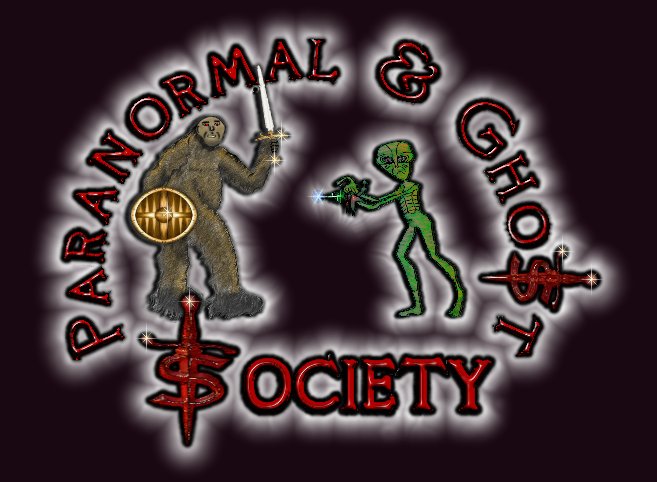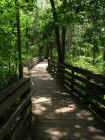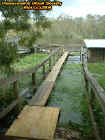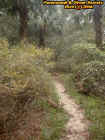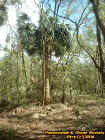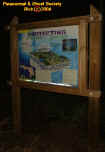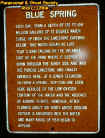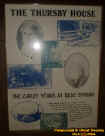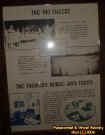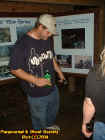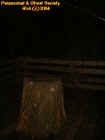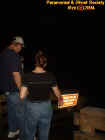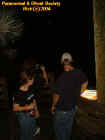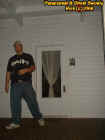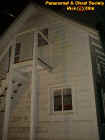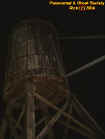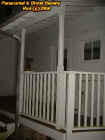|
|
||
|
For almost a thousand years a tribe of Indians called the Timucuan roamed the area where the springs are today. The crystal clear waters were great for drinking. The snails near the waters were gathers off of sandbars and provided food for the tribe. The surrounding swamps and uplands provided food, clothing, shelter, materials for tools and weapons. Deer and Black Bear were abundant in the woods at the time and still are today. The fish are abundant with Teeming Gar, Bass, Blue Gills, Tilapia, Giant Channel Catfish and many other types of fish. At one time before the area was made into a state park giant basking alligators were very abundant in the Blue Springs Run and Lagoon. Over 100s of years the shells that the Indians discarded formed a massive mound made mostly of snails and sand. Sad to say by the mid 1800s almost all the Indians had been either driven south or killed as pioneer settlers took over these jewel as the white man used the area for his own gain. A man by the name John Bartram a British Botanist who explored the St. Johns River in search of values for the Crown of England three years after they required Florida from Spain first came across this area. In 1766 he rowed his boat past the alligators and right over the crystal clear waters of the Blue Spring itself hence after this find this land of paradise was on longer a secret and that is when the Timucuan Tribe was exposed. In the late 1860s an anthropologist named Jeffries Wyman the curator of Harvard University's Peabody Museum had examined the mound then later in the 1890s by Clarence B. Moore. The mound was 14' in height, 25.5' wide, and 300' in circumference built of alternating layers of white and brown sand mixed with various shells. Thus making this one of the largest mounds in the central Florida area. Many things were discovered inside the mound such as clay shaped figures of animals, pottery with corncob deigns, cold and silver ornaments. Upon this find it suggested the Timucuan's traded with the Calusas of Southwest Florida. No more then 100' away from the mound a large carved owl was found in the St. Johns River in 1955. Based on studies it is said that it stood next to the mound to ward of any unwanted visitors sort of like a Totem Pole would do. In 1855 a man from Brooklyn, New York arrived here named Louis P. Thursby and built a temporary cabin right on the massive mound. Perhaps by building a cabin here it would be safe from the flooding that the St. Johns river would cause. In 1972 a giant mansion replaced the cabin. Thursby planted orange groves and built one of the first Steamboat landings on the upper St. Johns River. One of them landings was the French Docks which we also investigated. Thursby at one time was even held captive by the Union Army in the civil war as at one time although Blue Springs was not a battle ground Gunships cased the St. Johns River those that lived on it were often invaded and taken prisoner. Of course Thursby was eventually let go as you can see he had established major growth by the building of his mansion and steamboat landings. Thus the Thursby family was the first white settlers to make a home in the area and there only outside link at the time was steamboats which delivered mail and supplies from the nearby Lake Monroe. The Thursby House served as a steamboat hotel for passengers who arrived by steamboat. Some of those passengers were very prominent an example would be George Colby the founder of Cassadaga the spiritualist camp. The local homesteaders were able to ship crops, food, and other materials off to Jacksonville using the steamboat this was a great source of income for the Thursby family as well as there harvest from the oranges. The house in one way served as a plantation as it served as more then just a hotel. In 1895 the great freeze had occurred here in Central Florida and all citrus crops died thus steering several planters more south where the climate was even warmer. In 1900s the mansion was expanded when Thursby's son John added a third story and kitchen. The rainwater was stored in a cypress water tank which had two pipes that extended into the roof. The pipes carried water into the house for washing, cooking, as well as bathing as the spring water had to much sulfur content and the river water was to muddy. In 1945 plumbing and electricity was installed into the house and the Thursby family sold this massive house eventually to it leading abandoned and in very poor condition. In 1972 the Florida Park Service bought the house and restored it and to this day tours are still available. The pilings from the steamboat dock still remain perhaps these are the pilings we seen over at the French Docks none the less they are relics of the past and our early settlers. Also the house contains many antiques of the past like paintings, china, old cypress furniture etc...! Today Blue Springs State Park is visited by thousands per year at this 2,192 acres of lush wildlife and jungle fauna. It sits between Lake Beresford and Lake Monroe and many come just because this is were some of the first European Explorers visited. I was one of those visitors at the end of February 2004 when I first moved to Florida perhaps that is what intrigued me to visit here was its beauty. The park offers camping, swimming in the springs which remain a constant 72 Degrees all year around, scuba diving in its crystal clear waters, fishing, Picnicking, canoeing and hiking. There is even a little general store which offers camping gear and food near the springs so its very homey here and comfortable for all ages. In 1983 tours of the first floor of the Thursby house began as many for a first time would get to see a part of history. Each minute 75,000 gallons of sulfur water are pushed up into the Blue Springs run which eventually leads out into the St. Johns River. Divers can swim 120ft down an under water cavern where a giant boulder blocks the way in the lagoon. The water at one time was full of alligators but the park service netted the area off so that bathers could enjoy the 72 degree water. The entire bottom of the Lagoon and Blue Springs Run is made of stone and divers can enjoy the various aquatic life while swimming under water. You will see very few fish close to the springs however as there is little oxygen unless you are roughly 100 yards away. Water seeps into the ground from the uplands eventually being absorbed into the limestone and forming the spring. Also along the trails others can see miniature deer and wild black bear which are still very abundant inside the park. The trails are lined up with a broad leafed type of tree called the Hammock which in Native American terms means a Shady Place. November through March in Blue Springs serves as a refuse for the West Indian Manatee which is one of the world's most endangered species. Manatees can get up to 3,000 Lbs and 13' in length. Unfortunately many manatees are being killed by motor boats and propellers. The manatee has no known predators but mankind itself therefore they are very curious creatures. They will swim right up to you in the springs and just look at you. My son was in the swimming area when one came up to him they are very friendly mammals and yes vegetarians as well. They enjoy warmer water so this is why they visit Blue Springs during the winter. The manatee has a very low birth rate so each year there are less manatees in the waters but the ones that come to Blue Springs all have names and are seen years by 1000s of visitors old and young. Perhaps someday in the future I will get into the water and try to film one of these Manatees for others to see an enjoy I love these creatures. In a final note I again am one of the first paranormal groups to actually investigate the Blue Springs area. I have come to the conclusion that there are more then manatees and black bear in the area. But in reality I believe many Indian ghost haunt the forest surrounding the land. Imagine at one time many of the Timucuan Indians were massacred on these land but not only that but over 100s of years the Native American people lived and died along these ancient springs. But like any Native American lands perhaps there is some lore of a hairy man like beast known as Sasquatch sited in the area. The Indians learned to coexist with this creature because they respected it just as they respected the land. Unlike the white man who would kill the Indians and other animals out of selfishness and personal gain. Often when you hear about Florida you hear about the Skunk Ape which is a cousin of the Western and Northern Sasquatch. The fact remains is this you have over 2,000 acres here of jungle and woods scenery anything can hide back in here. But since many campers leave behind there food and garbage what better then a family of Skunk Apes to live off the land as food and water are available. How do we know this Cryptid roams here very simple one of our investigators seen a very large brown creature walking across a road and I heard it as well as felt it. So we definitely will return to work more with this creature in the future. Due to the park being shut down from hurricane Frances we were able to have more free range in our investigation and perhaps that is why the Skunk Ape activity was so high here. For us to experience what we did comes a line of respect perhaps for these creatures as well as them respecting us. Also there are reports of a giant serpent that has been sighted near here. How true a lake monster is it is hard to say but not impossible. After all the St. Johns river is near by home to many alligators and strange things lurking alone its muddy bottom. Like ancient times this whole area is still very untouched and well preserved so perhaps what makes this historical place interesting is the fact that much awaits to be discovered just as we investigated other areas around the Blue Springs such as the French Docks and Train Tracks Etc. © By Rick-AngelOfThyNight Update: Lee
our investigators father was a park ranger here. He never mentioned
anything about bigfoot roaming the Blue Springs woods however he did
mention according to Lee seeing strange lights around the boil. The boil
goes about 120 feet down and once you get to the bottom you can explore
the caverns. The problem is back in the 1960s every month people were
dying because they dove down ran out of oxygen or got lost in the under
water caverns. Sometimes as many as 7 a year. Sometimes they fish out
bodies that have been down there for weeks as the caverns are very
unexplored and go very far perhaps interconnecting to others in the area.
But the fact remains some luminescent or strange lights that dance around
the spring are seen could these be the souls of all the divers who lost
there lives here? Its a real scary scenario knowing that so many deaths
have taken place at such a serene place. Also a tree near the Thursby
House was struck by lightening and exploded the day the grandson and last
Thursby passed away if that is not strange enough. |
||
|
Day Night
|
||
|
|
|
